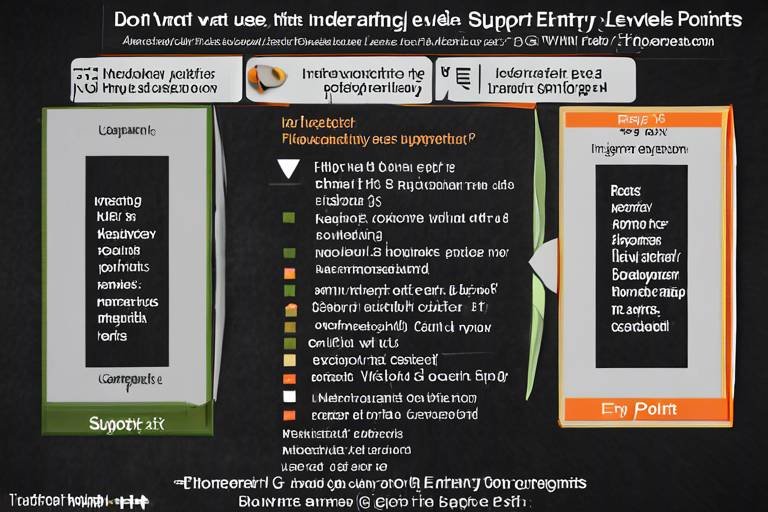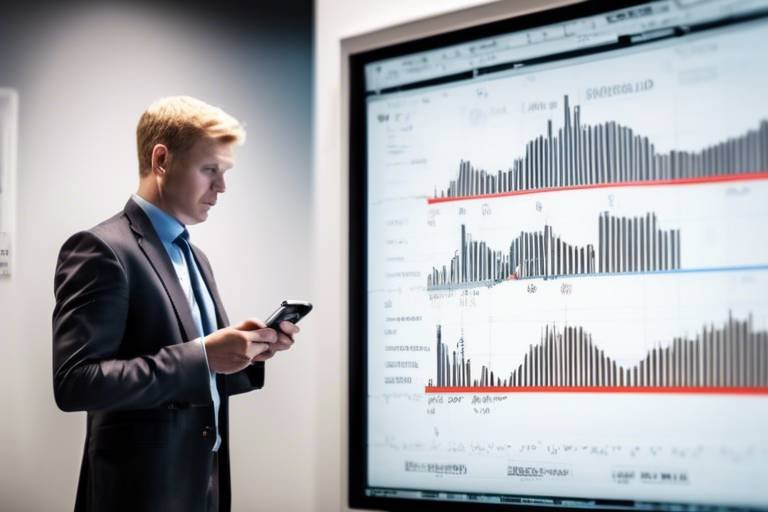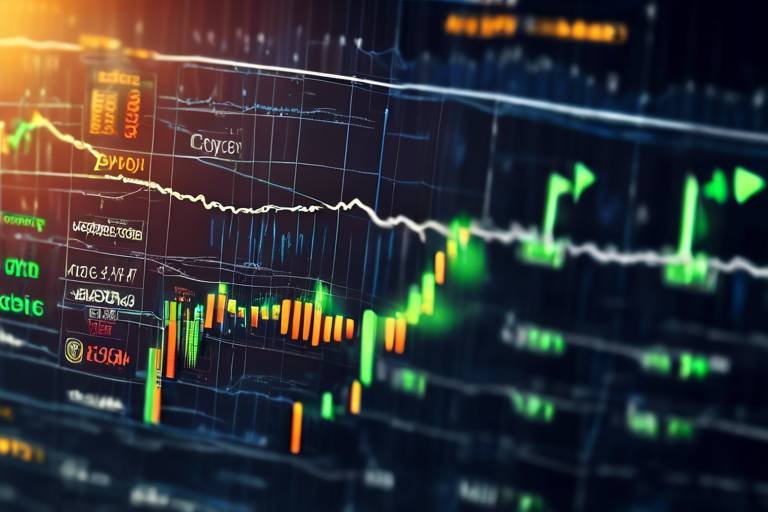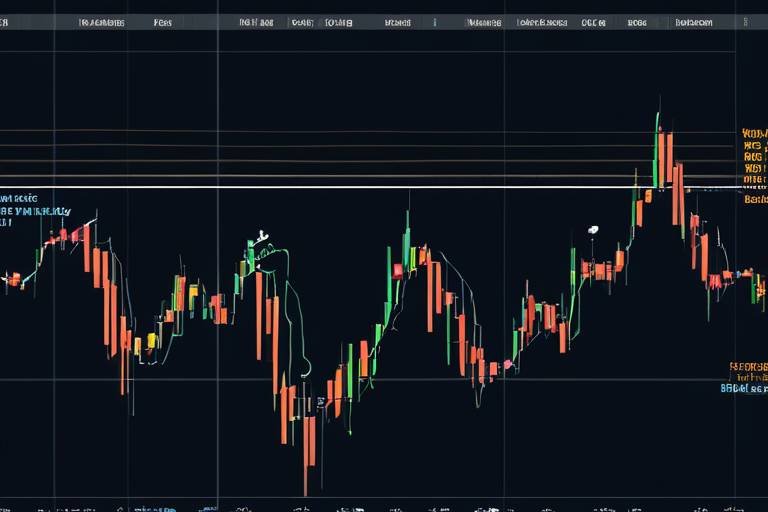Effective Swing Trading Strategies for Cryptocurrency
In the fast-paced world of cryptocurrency, swing trading has emerged as a popular strategy for traders looking to capitalize on price movements without the need for constant monitoring. Unlike day trading, where positions are opened and closed within the same day, swing trading allows traders to hold onto their assets for several days or weeks, aiming to profit from short to medium-term trends. This approach is particularly appealing in the volatile crypto market, where price swings can be dramatic and profitable.
But what makes swing trading so effective? First and foremost, it offers flexibility. You don't have to be glued to your screen all day; instead, you can analyze the market at your convenience and make informed decisions based on your research. Additionally, swing trading can be less stressful than day trading, as it allows for more time to evaluate potential trades. This article will delve into the principles of swing trading, the importance of choosing the right cryptocurrency, and the technical analysis tools that can enhance your trading success.
As we navigate through the nuances of swing trading, it's crucial to understand that success in this arena is not just about making quick profits. It's about developing a strategy that aligns with your financial goals and risk tolerance. With the right approach, swing trading can be a rewarding venture that complements your overall investment strategy.
In the sections that follow, we will explore various aspects of swing trading, including how to select the right cryptocurrencies, the significance of market capitalization, liquidity considerations, and volatility analysis. We'll also dive into essential technical analysis tools, such as moving averages and RSI indicators, which can provide valuable insights into market trends. Finally, we will discuss risk management strategies that are vital for long-term success in swing trading.
So, whether you're a seasoned trader or just starting your journey into the world of cryptocurrency, this guide will equip you with the knowledge and tools necessary to make informed trading decisions. Let's embark on this exciting journey into the realm of effective swing trading strategies!
- What is swing trading? Swing trading is a trading strategy that aims to capture short to medium-term price movements in assets, allowing traders to hold positions for several days or weeks.
- How do I choose the right cryptocurrency for swing trading? Look for cryptocurrencies with strong market capitalization, adequate liquidity, and favorable volatility to enhance your trading strategy.
- What tools are essential for swing trading? Key tools include technical analysis indicators like moving averages, RSI, and MACD, which help identify trends and potential entry and exit points.
- How can I manage risks in swing trading? Implementing stop-loss orders and proper position sizing are crucial techniques for managing risks effectively.

Understanding Swing Trading
Swing trading is a dynamic approach to trading that focuses on capturing short to medium-term price movements in various assets, particularly in the vibrant world of cryptocurrency. Unlike day trading, which involves making multiple trades within a single day, or long-term investing, where assets are held for extended periods, swing trading sits comfortably in the middle. It allows traders to take advantage of price swings over days or weeks, making it an attractive option for those who can't dedicate all their time to the markets.
The beauty of swing trading lies in its flexibility. Traders can analyze market trends and engage in trades that can last from a few days to several weeks, allowing for both strategic planning and the ability to respond to market changes. This strategy can be particularly rewarding in the cryptocurrency market, where volatility often creates opportunities for profit. However, it also requires a solid understanding of market behavior and the ability to make informed decisions quickly.
One of the key benefits of swing trading is the potential for significant returns without the need for constant monitoring of the market. Traders can set their strategies, place their trades, and then step back, allowing for a more balanced lifestyle. Yet, this doesn't mean that swing traders can become complacent. They still need to stay informed about market trends, news, and events that could impact their positions.
To excel in swing trading, it's essential to grasp its core principles, which include:
- Trend Identification: Understanding whether the market is in an uptrend, downtrend, or sideways is crucial for making informed trading decisions.
- Entry and Exit Points: Determining the right time to enter or exit a trade can significantly impact profitability.
- Risk Management: Protecting your capital through stop-loss orders and proper position sizing is vital for long-term success.
In summary, swing trading offers a unique blend of strategy and opportunity in the fast-paced world of cryptocurrency. By understanding the principles behind this trading style, traders can position themselves to capitalize on market movements while managing risks effectively. Whether you are a seasoned trader or just starting, swing trading can be a rewarding endeavor if approached with the right mindset and tools.

Choosing the Right Cryptocurrency
When it comes to swing trading, one of the most critical decisions you'll make is choosing the right cryptocurrency. With thousands of options available, how do you narrow it down? It’s like finding a needle in a haystack, but fear not! By focusing on a few essential criteria, you can significantly enhance your chances of success in this volatile market. Let’s break it down.
First off, market capitalization is a key factor. This figure represents the total value of a cryptocurrency and serves as a barometer for its stability and growth potential. A higher market cap often indicates a more established coin, which can be less risky for swing traders. However, don’t overlook the small caps! They might be riskier, but they also offer the potential for explosive returns. Think of them as the wildcards in your trading deck.
Next up is liquidity. This refers to how easily you can buy or sell a cryptocurrency without affecting its price. High liquidity means you can enter and exit positions swiftly, which is crucial for swing trading. Imagine trying to sell a rare collectible; if there aren’t many buyers, you might have to settle for a lower price. In the same vein, low liquidity can lead to slippage, which can eat into your profits. So, always check the trading volume before diving in!
Another important aspect to consider is volatility. In the world of cryptocurrencies, volatility can be your best friend or your worst enemy. It presents opportunities for quick gains, but it can also lead to significant losses if not managed properly. Analyzing the historical price movements of a cryptocurrency can give you insights into its volatility. For instance, if you notice that a coin frequently swings 10% or more within short periods, it could be a good candidate for swing trading. However, remember that with great potential comes great risk!
To make your decision easier, let’s summarize the essential criteria in a table:
| Criteria | Description |
|---|---|
| Market Capitalization | Total value of the cryptocurrency, indicating stability and growth potential. |
| Liquidity | Ease of buying/selling without affecting the price. |
| Volatility | Price fluctuations that can create opportunities for gains or risks of losses. |
In conclusion, choosing the right cryptocurrency for swing trading is about balancing risk and reward. By focusing on market capitalization, liquidity, and volatility, you can make more informed decisions that align with your trading strategy. Remember, the cryptocurrency market is like a rollercoaster ride; it has its ups and downs, but with the right approach, you can enjoy the thrill while managing the risks!

Market Capitalization
Market capitalization, often referred to as "market cap," is a crucial metric in the world of cryptocurrency trading. It represents the total value of a cryptocurrency and is calculated by multiplying the current price of a coin by its total circulating supply. Understanding market capitalization is essential for swing traders because it provides insight into the potential risks and rewards of trading a particular cryptocurrency. A higher market cap typically indicates a more stable investment, while lower market caps can suggest higher volatility and risk.
For instance, consider the following breakdown of market capitalization:
| Market Cap Range | Description | Risk Level |
|---|---|---|
| Large Cap (Over $10 billion) | Established cryptocurrencies with a strong market presence. | Low |
| Mid Cap ($1 billion - $10 billion) | Growing projects that show potential for expansion. | Moderate |
| Small Cap (Under $1 billion) | Newer or less established cryptocurrencies that may offer high growth potential. | High |
As a swing trader, knowing the market cap of a cryptocurrency can help you make informed decisions. For example, large-cap cryptocurrencies like Bitcoin and Ethereum are generally less volatile and can provide more reliable trading opportunities. On the other hand, small-cap coins may present enticing opportunities for significant gains but come with a higher risk of loss. It's like choosing between a sturdy, reliable car and a flashy sports car—both can get you where you want to go, but one may be a safer ride than the other.
Additionally, market cap can influence the liquidity of a cryptocurrency. Higher market cap assets tend to have more trading volume, which means you can buy and sell more easily without significantly impacting the price. This liquidity is essential for swing trading, as it allows you to enter and exit positions quickly, maximizing your potential profits while minimizing the risks associated with market fluctuations.
In summary, market capitalization is a vital factor to consider when swing trading cryptocurrencies. It helps you gauge the stability of an asset, understand the associated risks, and make better-informed trading decisions. So, the next time you’re analyzing potential cryptocurrency investments, remember to check the market cap—it could be the key to your trading success!

Large Cap vs. Small Cap
When diving into the world of swing trading, one of the most critical decisions you'll make is whether to focus on large-cap or small-cap cryptocurrencies. Each category has its own distinct characteristics that can significantly influence your trading strategy and outcomes. So, what exactly do these terms mean, and how can they affect your trading experience?
Large-cap cryptocurrencies, such as Bitcoin and Ethereum, are typically defined as those with a market capitalization exceeding $10 billion. These coins are often considered the blue chips of the crypto world. They tend to exhibit more stability, which can be a double-edged sword. On one hand, their established market presence means they are less likely to experience drastic price swings, making them a safer choice for swing traders who prefer to minimize risk. On the other hand, this stability might limit the potential for significant short-term gains.
Conversely, small-cap cryptocurrencies are those with a market cap under $1 billion. These coins can be likened to the startups in the trading landscape. They often exhibit higher volatility, which can be exhilarating for traders looking for explosive price movements. However, this volatility comes with increased risk. Small-cap coins can experience rapid price fluctuations, leading to substantial gains or losses within short time frames. For swing traders willing to embrace this risk, the potential rewards can be significant.
Here’s a quick comparison to summarize the key differences:
| Aspect | Large-Cap Cryptocurrencies | Small-Cap Cryptocurrencies |
|---|---|---|
| Market Capitalization | Over $10 billion | Under $1 billion |
| Stability | More stable, lower volatility | Higher volatility, less stability |
| Potential Returns | Moderate returns | Higher potential returns |
| Risk Level | Lower risk | Higher risk |
Ultimately, the choice between large-cap and small-cap cryptocurrencies boils down to your personal trading style and risk tolerance. If you prefer a more conservative approach, large-cap coins might be your best bet. However, if you're feeling adventurous and are looking for higher potential returns, small-cap cryptocurrencies could be the way to go. Just remember to do your research and keep an eye on market trends!
- What is a market cap? Market capitalization (market cap) refers to the total value of a cryptocurrency, calculated by multiplying its current price by the total number of coins in circulation.
- Are small-cap cryptocurrencies worth the risk? While they can offer higher returns, small-cap cryptocurrencies are also more volatile and risky. It's essential to assess your risk tolerance before investing.
- How do I choose between large-cap and small-cap cryptocurrencies? Consider your trading goals, risk tolerance, and market conditions. Large-cap coins tend to be more stable, while small-cap coins can provide higher volatility and potential returns.

Liquidity Considerations
When diving into the world of swing trading, one of the most critical factors to consider is liquidity. But what exactly does liquidity mean in the context of cryptocurrency? In simple terms, liquidity refers to how easily an asset can be bought or sold in the market without affecting its price. Imagine trying to sell a rare collectible; if there are few buyers, you might have to lower your price significantly. The same principle applies to cryptocurrencies.
High liquidity indicates that there are plenty of buyers and sellers in the market, making it easier to enter and exit positions without significant price fluctuations. This is particularly important for swing traders who rely on short to medium-term price movements. If a cryptocurrency has low liquidity, you might find yourself in a situation where you can't sell your holdings quickly, or you might have to accept a less favorable price.
Here are a few reasons why liquidity is essential for swing trading:
- Faster Execution: In a highly liquid market, trades can be executed almost instantly, allowing traders to capitalize on price movements as they happen.
- Better Pricing: High liquidity often leads to tighter bid-ask spreads, meaning you can buy and sell at prices closer to the market value.
- Reduced Slippage: Slippage occurs when the execution price of a trade differs from the expected price. In liquid markets, slippage is minimized, which is crucial for maintaining profitability.
To assess the liquidity of a cryptocurrency, traders can look at several key indicators:
| Indicator | Description |
|---|---|
| Trading Volume | The total amount of a cryptocurrency traded over a specific period. Higher volumes typically indicate better liquidity. |
| Order Book Depth | The number of buy and sell orders at various price levels. A deeper order book suggests greater liquidity. |
| Bid-Ask Spread | The difference between the highest price a buyer is willing to pay and the lowest price a seller will accept. A smaller spread indicates higher liquidity. |
In conclusion, understanding liquidity is paramount for swing traders looking to navigate the volatile cryptocurrency market. By choosing assets with high liquidity, traders can enhance their chances of executing successful trades and managing their positions effectively. Always remember, in the fast-paced world of crypto, being able to react quickly can make all the difference!

Volatility Analysis
When it comes to swing trading in the cryptocurrency market, volatility is both a friend and a foe. It's like a double-edged sword—while it can create opportunities for profit, it can also lead to significant losses if not managed properly. Understanding volatility is crucial for swing traders because it directly impacts the price movements of cryptocurrencies, allowing traders to identify optimal entry and exit points. So, how do we analyze this volatility to our advantage?
First, let’s consider what volatility actually means in the context of cryptocurrencies. Volatility refers to the degree of variation in trading prices over time. In simpler terms, it’s how much the price of a cryptocurrency fluctuates. High volatility means that the price can change dramatically in a short period, while low volatility indicates more stable prices. Swing traders thrive on these price movements, aiming to capitalize on the swings that occur within a trend.
To analyze volatility effectively, traders often use various tools and techniques. One popular method is the Average True Range (ATR), which measures market volatility by decomposing the entire range of an asset for that period. The ATR provides insights into how much an asset typically moves, helping traders set their stop-loss and take-profit levels more effectively. For example, if the ATR for a cryptocurrency is 5%, it suggests that the price can swing up or down by that percentage over a given timeframe. This information is invaluable when determining how much risk to take on each trade.
Another method to assess volatility is through historical price analysis. By examining past price movements, traders can gauge how volatile a cryptocurrency has been in different market conditions. This approach allows traders to identify patterns and make informed predictions about future price behavior. For instance, if a cryptocurrency has shown consistent spikes in volatility during specific events, such as major announcements or market shifts, traders can prepare themselves to take advantage of these opportunities.
Additionally, utilizing chart patterns can be beneficial in predicting volatility. Patterns such as flags, pennants, and triangles can signal potential breakouts or breakdowns, which are often accompanied by increased volatility. By recognizing these patterns, traders can position themselves to enter trades just before a significant price movement occurs. However, it's essential to remember that while these patterns can provide clues, they are not foolproof and should be used in conjunction with other analysis methods.
Finally, it’s important to keep an eye on external factors that can influence volatility. News events, regulatory changes, and market sentiment can all lead to sudden price swings. For instance, if a major cryptocurrency exchange faces security issues, it may trigger panic selling, leading to increased volatility. Therefore, staying updated with the latest news and market trends is crucial for swing traders.
In summary, analyzing volatility is an essential component of successful swing trading in the cryptocurrency market. By employing tools like the ATR, conducting historical price analysis, recognizing chart patterns, and monitoring external influences, traders can make informed decisions that enhance their chances of success. Remember, in the world of crypto, volatility is inevitable, but with the right strategies, you can turn it into a profitable venture.
- What is the best way to measure volatility in cryptocurrencies? The Average True Range (ATR) is a popular tool used to measure volatility, as it provides insights into price fluctuations over a specific period.
- How does volatility affect swing trading? Volatility can create opportunities for profit by allowing traders to capitalize on price swings, but it also increases the risk of significant losses.
- Can external factors impact cryptocurrency volatility? Yes, news events, regulatory changes, and market sentiment can all lead to sudden price swings and increased volatility.

Technical Analysis Tools
When it comes to swing trading in the cryptocurrency market, having the right tools at your disposal can make all the difference. are essential for traders looking to make informed decisions based on price movements and market trends. These tools allow traders to analyze historical data, identify patterns, and predict future price actions, which is crucial for maximizing profits and minimizing risks. In this section, we will explore some of the most popular technical analysis tools that can aid swing traders in their quest for success.
One of the most fundamental tools in any trader’s arsenal is the moving average. Moving averages help smooth out price data by creating a constantly updated average price. This can help traders identify the direction of the trend more clearly. There are several types of moving averages, including the simple moving average (SMA) and the exponential moving average (EMA). The SMA calculates the average price over a specific number of periods, while the EMA gives more weight to recent prices, making it more responsive to new information. By using moving averages, traders can spot potential reversal points and determine whether they should buy or sell.
Another powerful tool is the Relative Strength Index (RSI). The RSI is a momentum oscillator that measures the speed and change of price movements. It ranges from 0 to 100 and is typically used to identify overbought or oversold conditions in a market. A reading above 70 may indicate that an asset is overbought, while a reading below 30 suggests it is oversold. Understanding the RSI can help traders make better entry and exit decisions. For instance, if the RSI indicates that a cryptocurrency is oversold, it may be a good time to consider buying, expecting a price rebound.
In addition to the RSI, the Moving Average Convergence Divergence (MACD) is another essential indicator. The MACD is a trend-following momentum indicator that shows the relationship between two moving averages of a security’s price. Traders often look for crossovers between the MACD line and the signal line to identify potential buy or sell opportunities. When the MACD crosses above the signal line, it may indicate a bullish trend, while a crossover below could signal a bearish trend. Using the MACD in conjunction with other tools can provide a more comprehensive view of market conditions.
To visualize these indicators effectively, traders often rely on chart patterns. Chart patterns, such as head and shoulders, triangles, and flags, can provide valuable insights into potential price movements. For example, a head and shoulders pattern may indicate a reversal, while a flag pattern often signals a continuation of the current trend. Recognizing these patterns can help traders anticipate market movements and make timely decisions.
To summarize, technical analysis tools are vital for swing traders looking to navigate the volatile cryptocurrency markets. By leveraging tools like moving averages, RSI, MACD, and chart patterns, traders can gain a clearer understanding of market dynamics and improve their chances of success. However, it’s essential to remember that no tool is perfect. Combining technical analysis with sound risk management practices will ultimately lead to better trading outcomes.
- What is the most important technical analysis tool for swing trading?
The importance of technical analysis tools can vary between traders, but many find moving averages and RSI to be particularly helpful in identifying trends and potential reversal points. - Can I use technical analysis for long-term investing?
Yes, while technical analysis is often associated with short-term trading strategies like swing trading, it can also be applied to long-term investing to identify entry and exit points. - How do I choose the right technical analysis tools?
Choosing the right tools depends on your trading style and preferences. Experimenting with different indicators and observing how they align with your trading strategy can help you find what works best for you.

Moving Averages
Moving averages are one of the most essential tools in a swing trader's toolkit, acting like a compass that guides traders through the often turbulent waters of cryptocurrency markets. They help in smoothing out price data by creating a constantly updated average price, which can make it easier to identify trends. By analyzing these averages, traders can make informed decisions about when to enter or exit a position. But how do moving averages work, and why should you care?
There are two main types of moving averages that traders often use: the Simple Moving Average (SMA) and the Exponential Moving Average (EMA). The SMA calculates the average price over a specific number of periods, giving equal weight to all prices in that period. On the other hand, the EMA gives more weight to recent prices, making it more responsive to new information. This responsiveness can be crucial in the fast-paced world of cryptocurrency trading.
For example, if you're looking at a 10-day SMA, you would sum up the closing prices of the last 10 days and divide by 10. This average will give you a sense of the overall trend, but it might lag behind current price movements. In contrast, the 10-day EMA will react more quickly to price changes, which can be beneficial when trying to catch short-term swings.
Here’s a quick comparison of the two:
| Feature | Simple Moving Average (SMA) | Exponential Moving Average (EMA) |
|---|---|---|
| Weighting | Equal weight to all data points | More weight to recent data |
| Responsiveness | Slower to react | Faster to react |
| Use Case | Long-term trends | Short-term trends |
But moving averages aren't just about identifying trends; they also serve as dynamic support and resistance levels. When the price of a cryptocurrency is above its moving average, it often indicates an uptrend, while a price below the moving average suggests a downtrend. Traders frequently look for crossovers—when a shorter-term moving average crosses above a longer-term moving average, it can signal a potential buy opportunity, while the opposite crossover may indicate a sell signal.
Incorporating moving averages into your swing trading strategy can significantly enhance your decision-making process. However, it's important to remember that they are not foolproof. Combining moving averages with other technical indicators, such as the Relative Strength Index (RSI) or MACD, can provide a more comprehensive view of market conditions. By doing so, you can increase your chances of making profitable trades while minimizing risks.
In summary, moving averages are a fundamental aspect of swing trading in the cryptocurrency market. They help identify trends, serve as support and resistance levels, and can be used in conjunction with other indicators to create a robust trading strategy. Whether you're a novice or an experienced trader, understanding and effectively utilizing moving averages can greatly enhance your trading success.
- What is the best moving average to use for swing trading? The choice between SMA and EMA often depends on your trading style. EMAs are generally preferred for short-term trading due to their responsiveness.
- How do I set up moving averages on my trading platform? Most trading platforms allow you to customize indicators. Simply select the moving average option and choose the period (e.g., 10-day, 50-day) that suits your strategy.
- Can moving averages predict future price movements? While they can indicate trends and potential reversal points, moving averages should not be solely relied upon for predictions. It's best to combine them with other analysis tools.

RSI and MACD Indicators
The Relative Strength Index (RSI) and Moving Average Convergence Divergence (MACD) are two of the most popular technical analysis tools used by swing traders in the cryptocurrency market. Understanding how to effectively utilize these indicators can significantly enhance your trading strategy, allowing you to make more informed decisions. But what exactly are these indicators, and how can they be applied in your trading routine?
The RSI is a momentum oscillator that measures the speed and change of price movements. It ranges from 0 to 100 and is typically plotted over a 14-day period. Traders often use the RSI to identify overbought or oversold conditions in a market. When the RSI exceeds 70, it indicates that a cryptocurrency may be overbought, suggesting a potential price correction. Conversely, an RSI below 30 indicates that the asset may be oversold, potentially signaling a buying opportunity. However, it’s essential to consider that these levels are not foolproof and can vary depending on the market conditions.
On the other hand, the MACD is a trend-following momentum indicator that shows the relationship between two moving averages of an asset's price. The MACD is calculated by subtracting the 26-period exponential moving average (EMA) from the 12-period EMA. The result is the MACD line, which is then plotted against a 9-period EMA called the signal line. When the MACD line crosses above the signal line, it can indicate a bullish trend, prompting traders to consider entering a long position. Conversely, a cross below the signal line may suggest a bearish trend, signaling a potential exit or short opportunity.
To illustrate the differences and applications of these indicators, let's take a look at a comparison table:
| Indicator | Type | Purpose | Key Levels |
|---|---|---|---|
| RSI | Momentum Oscillator | Identifies overbought or oversold conditions | Overbought: >70, Oversold: <30 |
| MACD | Trend-Following Indicator | Identifies bullish or bearish trends | Crossovers of MACD and Signal Line |
Utilizing both the RSI and MACD indicators together can provide a more robust trading strategy. For instance, if the RSI indicates that a cryptocurrency is oversold and the MACD shows a bullish crossover, it may be a strong signal to enter a long position. However, it’s crucial to remember that no indicator is infallible. Always consider other factors such as market news, overall trends, and your risk tolerance before making trading decisions.
In conclusion, mastering the RSI and MACD indicators can empower you as a swing trader in the cryptocurrency market. By recognizing the signals these indicators provide, you can better navigate the volatile waters of crypto trading. Remember, practice makes perfect, so take your time to analyze and apply these tools in your trading strategy for optimal results.
- What is the best time frame for using RSI and MACD? The best time frame can vary depending on your trading style, but many swing traders prefer using daily or 4-hour charts for these indicators.
- Can I use RSI and MACD for day trading? Yes, while they are popular among swing traders, these indicators can also be effective for day trading when adjusted to shorter time frames.
- How do I know if I should trust the signals from these indicators? It's wise to use them in conjunction with other analysis techniques and market research to confirm signals before making a trade.

Risk Management Strategies
When it comes to swing trading in the volatile world of cryptocurrency, effective risk management is your best friend. Think of it as your safety net, ensuring that you can weather the storms of market fluctuations without losing your shirt. The essence of risk management lies in understanding that not every trade will be a winner. In fact, seasoned traders know that losses are part of the game. The key is to minimize those losses while maximizing your gains. So, how do you achieve this? Let’s dive into some crucial techniques.
One of the most effective tools in a trader's arsenal is the stop-loss order. This handy feature allows you to set a predetermined price at which your position will automatically close if the market moves against you. Imagine you’re on a roller coaster: you wouldn’t want to go upside down without a safety harness, right? Setting a stop-loss is like strapping yourself in. It protects your investment from significant downturns, enabling you to trade with confidence. But how do you determine the right stop-loss level? It often depends on your risk tolerance and the asset's volatility. A common approach is to place your stop-loss just below a recent support level, allowing for minor fluctuations while safeguarding your capital.
Another vital aspect of risk management is position sizing. This involves determining how much of your capital to risk on a single trade. Think of your trading capital as a pizza; you wouldn't want to eat the entire pie in one sitting, right? Instead, you’d slice it into manageable pieces. Similarly, you should only risk a small percentage of your total capital on each trade—typically between 1% to 3%. This way, even if you face a string of losses, your overall portfolio remains intact, allowing you to continue trading without the fear of total ruin.
To effectively calculate your position size, you can use the following formula:
| Formula | Description |
|---|---|
| Position Size (Account Risk × Total Account Balance) / (Entry Price - Stop Loss Price) | This formula helps you determine how many units of a cryptocurrency you should purchase based on your risk tolerance and the distance between your entry point and stop-loss level. |
Moreover, diversifying your portfolio is a powerful risk management strategy. Just as you wouldn’t put all your eggs in one basket, you should avoid concentrating your investments in a single cryptocurrency. By spreading your investments across multiple assets, you reduce the impact of a poor-performing asset on your overall portfolio. This can be especially important in the crypto market, where certain coins can experience dramatic price swings. Diversification allows you to capture gains in one area while offsetting losses in another.
In summary, mastering risk management strategies is essential for anyone serious about swing trading in cryptocurrency. By implementing stop-loss orders, practicing proper position sizing, and diversifying your portfolio, you can protect your capital and set yourself up for long-term success. Remember, the goal isn’t just to make money; it’s to ensure that you can continue trading and learning even after facing setbacks.
- What is a stop-loss order? A stop-loss order is a predetermined price at which your trade will close automatically to prevent further losses.
- How much of my capital should I risk on a trade? It’s generally recommended to risk no more than 1% to 3% of your total capital on a single trade.
- Why is diversification important in cryptocurrency trading? Diversification helps mitigate risks by spreading investments across various assets, reducing the impact of poor performance in any single asset.

Setting Stop-Loss Orders
Setting stop-loss orders is a fundamental skill every swing trader must master. Think of it as your safety net—an essential tool that protects your investments from significant downturns. When you enter a trade, you’re optimistic about the price moving in your favor, but the market can be unpredictable. A stop-loss order acts as a predetermined exit point, minimizing potential losses should the market take an unexpected turn.
To determine the ideal stop-loss level, consider your trading strategy and risk tolerance. Typically, traders set their stop-loss orders at a percentage below the entry price. For instance, if you buy a cryptocurrency at $100 and decide on a stop-loss of 5%, you would place your stop-loss order at $95. This way, if the price drops to $95, your position will automatically close, thereby limiting your loss to 5%.
However, it’s important to note that setting a stop-loss isn’t a one-size-fits-all approach. The volatility of the cryptocurrency market necessitates a tailored strategy. For instance, if you’re trading a highly volatile asset, a tighter stop-loss might trigger prematurely, causing you to exit a trade that could have turned profitable. Conversely, a wider stop-loss might expose you to larger losses than you’re comfortable with. Therefore, understanding the asset’s volatility is crucial when deciding where to place your stop-loss orders.
Here are some key factors to consider when setting stop-loss orders:
- Market Conditions: Analyze the current market sentiment and trends. Is the market bullish or bearish? This can influence how you set your stop-loss.
- Support and Resistance Levels: Identify key support and resistance levels on your charts. Placing your stop-loss just below a support level can be a strategic move, as breaking below this level might signal further declines.
- Personal Risk Tolerance: Everyone has different thresholds for risk. Determine how much of your capital you are willing to risk on a single trade and set your stop-loss accordingly.
Additionally, consider using a trailing stop-loss order. This type of stop-loss moves with the market price, allowing you to lock in profits while still protecting against potential losses. For example, if you set a trailing stop-loss at 5% below the market price, as the price increases, your stop-loss will adjust upward, maintaining that 5% buffer. This way, you can ride the wave of a price increase while still having a safety net in place.
In essence, setting stop-loss orders is not just about protecting your capital; it's about maintaining discipline in your trading strategy. By implementing well-thought-out stop-loss levels, you can navigate the unpredictable waters of cryptocurrency trading with greater confidence. Remember, it’s not just about making profits; it’s also about managing your risks effectively!
- What is a stop-loss order? A stop-loss order is an instruction to sell a security once it reaches a certain price, helping to limit potential losses.
- How do I determine where to set my stop-loss? Consider factors like your risk tolerance, market conditions, and key support and resistance levels when setting your stop-loss.
- Can I adjust my stop-loss after placing it? Yes, you can modify your stop-loss order based on changing market conditions or your trading strategy.
- What is a trailing stop-loss? A trailing stop-loss is a dynamic stop-loss that moves with the market price, allowing you to secure profits while limiting losses.

Position Sizing Techniques
When it comes to swing trading in the cryptocurrency market, understanding position sizing is like having the right tools in your toolbox. It’s not just about how much you trade; it’s about how much risk you’re willing to take on each trade. Imagine you’re a tightrope walker. If you don’t know how much weight you can balance, one misstep could send you tumbling down. In trading, mismanaging your position size can lead to significant losses.
So, how do you determine the right position size? It often boils down to a few key factors, including your total capital, your risk tolerance, and the specific trade setup. A common approach is the percentage risk method, where you decide what percentage of your trading capital you’re willing to risk on a single trade. Many experienced traders suggest risking no more than 1-2% of your total capital per trade. This way, even a series of losses won’t drastically impact your overall portfolio.
Let’s break it down with a simple formula:
Position Size (Account Equity x Risk Percentage) / Dollar Risk per Share
Here’s how it works: if you have an account equity of $10,000 and you’re willing to risk 2% on a trade, that means you’re okay with risking $200. If your entry point is $50 and your stop-loss is set at $48, the dollar risk per share is $2. Plugging these numbers into the formula gives you:
Position Size ($10,000 x 0.02) / $2 100 shares
This means you can buy 100 shares of that cryptocurrency while adhering to your risk management strategy. It’s a straightforward yet powerful technique that can help you maintain control over your trading outcomes.
Another method to consider is the volatility-based position sizing. This technique adjusts your position size based on the volatility of the cryptocurrency you’re trading. For instance, if a cryptocurrency is known for its wild price swings, you might choose to reduce your position size to manage the increased risk. Conversely, if you’re trading a more stable asset, you could afford to increase your position size. It’s all about adapting to the market conditions.
Ultimately, the goal of position sizing is to create a balance between maximizing potential profits and minimizing risks. By employing these techniques, you’re not just throwing darts in the dark; you’re making informed decisions that can lead to greater success in your swing trading journey.
- What is position sizing in trading?
Position sizing refers to the amount of capital allocated to a particular trade based on risk management strategies. - Why is position sizing important?
Proper position sizing helps in managing risk and can prevent significant losses in your trading account. - How do I calculate my position size?
You can calculate your position size by using the formula: Position Size (Account Equity x Risk Percentage) / Dollar Risk per Share. - What is the best percentage to risk per trade?
Most traders recommend risking no more than 1-2% of your total capital on any single trade.
Frequently Asked Questions
- What is swing trading in cryptocurrency?
Swing trading is a strategy that involves holding onto a cryptocurrency for a short to medium-term period, typically from a few days to several weeks. Traders aim to profit from price fluctuations during that time, capturing gains from market swings rather than holding long-term like traditional investors.
- How do I choose the right cryptocurrency for swing trading?
Choosing the right cryptocurrency is vital for success. Look for factors like market capitalization, liquidity, and volatility. Large-cap cryptocurrencies may provide stability, while small-cap ones can offer more significant price swings, which can be advantageous for swing trading.
- What technical analysis tools should I use for swing trading?
Popular technical analysis tools include moving averages, the Relative Strength Index (RSI), and the Moving Average Convergence Divergence (MACD). These tools help identify trends, potential reversal points, and market momentum, which can enhance your trading decisions.
- How important is risk management in swing trading?
Risk management is crucial to long-term success in swing trading. Implementing strategies like stop-loss orders and proper position sizing can protect your capital from significant losses and help you maintain a balanced trading approach.
- What are stop-loss orders, and how do I set them?
Stop-loss orders are designed to limit your losses by automatically selling a cryptocurrency when it reaches a predetermined price. To set them, consider market conditions and your personal risk tolerance, ensuring they align with your trading strategy.
- How can I analyze volatility in the cryptocurrency market?
Volatility analysis can be done by observing price fluctuations over time, using indicators like Bollinger Bands, and assessing historical price movements. Understanding volatility helps you determine optimal entry and exit points for your trades.



















